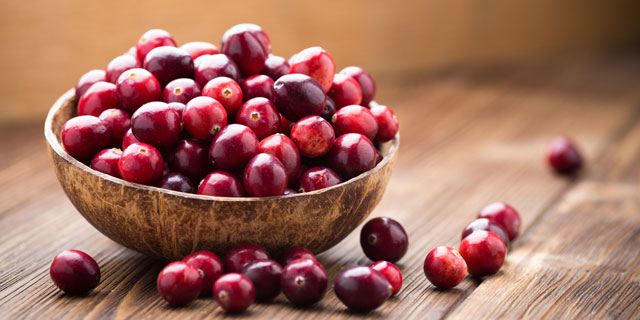Cranberries are special and not just on Thanksgiving. These little red berries are anti-inflammatory and immune system boosting thanks to a heap of antioxidants and vitamins including Vitamin C, Vitamin E, and Vitamin K. These antioxidants help protect the body against free radicals, infection, and disease. They’re also super berries, topping nearly every other fruit and vegetable in antioxidants per 45 calorie cup. With such amazing nutritional benefits cranberries should be enjoyed well beyond the holidays!
How do I pick the best cranberries?
Fresh cranberries should be rich in color and can range from a light red to deep crimson. They should be firm to the touch and be free of any nicks, dents, cuts, or soft spots. The highest quality berries are shiny, plump, and springy (they’ll actually bounce on a flat surface). If your berries don’t bounce, are mushy, brown, shriveled, or show any signs of decay move on. If you’re buying your cranberries already packaged just inspect the berries as best you can through the bag for any signs of mold or softness.
What can I make with cranberries?
Cranberry sauce is a given for the holidays but there is so much more that you can make with these nutritionally dense and deliciously tart berries. Add cranberries to sweet breads, muffins, and cupcakes for a tangy twist. A spicy cayenne cranberry sauce sweetened with agave pairs well with roasted pork or chops, while cranberry sorbet makes a perfect palate cleanser. Toss cranberries into your morning oatmeal for a boost of nutrition, use to infuse liquors, add to fruity salsas, make a compound butter, or sprinkle on a fruit tart and bake for a refreshingly tangy take on a sweet treat. From breakfast through dessert and drinks, let your cranberries take center stage.
To prep, simply run under cool water and pat dry. Most cranberry varieties need to be cooked before they can be eaten. Whichever method is used, cook only until the berries pop as cooking longer than this can lead to bitterness. Use frozen berries just as you would fresh to avoid soggy, soft cranberries.
Fresh cranberries will remain fresh for up to two months in the refrigerator if stored in a tightly sealed bag. The bag should be checked every few days to discard any berries that are soft or show signs of decay. Fresh berries can also be washed, dried, and frozen in airtight containers or plastic bags and will remain fresh for up to a year.
Recipes to try include: Cranberry Agave Mint Sorbet, Cranberry Glazed Pernil, and Cranberry Almond Oatmeal.


![Making Mealtime Matter with La Familia: Easy Sofrito [Video]](https://thelatinkitchen.com/wp-content/uploads/2015/10/sofrito-shutterstock__0-500x383.jpg)
![Easy Latin Smoothies: Goji Berry Smoothie [Video]](https://thelatinkitchen.com/wp-content/uploads/2015/12/goji_berry-shutterstock_-500x383.jpg)
















![Fun and Fast Recipes: Fiesta Cabbage Salad [Video]](https://thelatinkitchen.com/wp-content/uploads/2015/11/fiesta_cabbage_slaw-shutterstock_-500x383.jpg)









